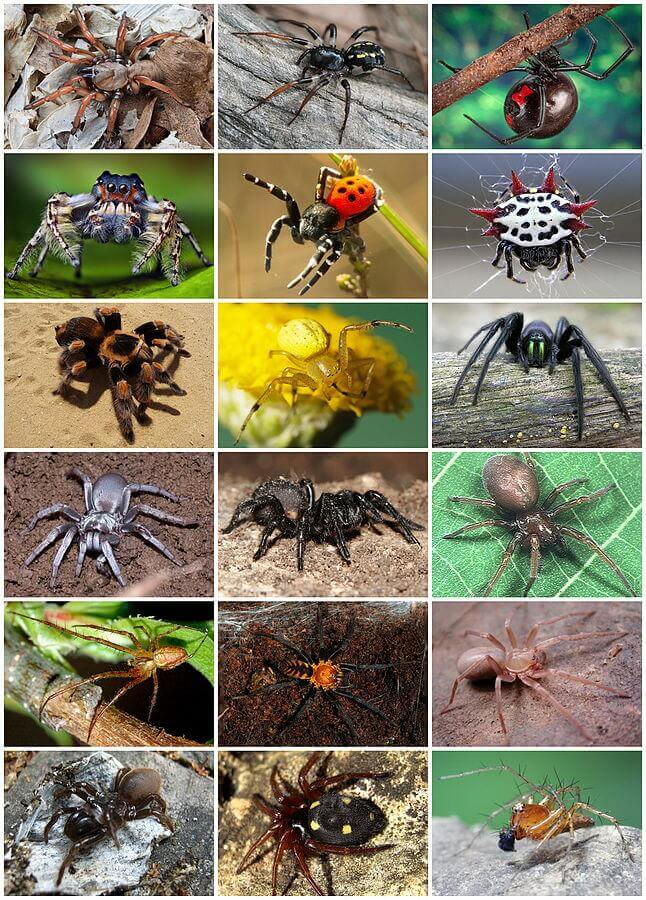Spiders
Scientific Name: Araneae
There are at least 4,000 documented spider species between the United States and Canada. Spiders are found on every continent except for Antarctica. Depending on the species, you can find them in dark areas with high moisture, like basements and crawl spaces or in areas that are dark, dry, and warm like air vents, upper corners of rooms and attics.
Spiders are predators that feed on other spiders, insects, and any other prey they are able to catch in their webs. They produce silk used to create their webs – the silk is very strong, elastic, and adhesive.

By multiple users [CC BY-SA 3.0], via Wikimedia Commons
Identification of Spiders
Spiders are air-breathing arthropods with 8 legs and fangs that inject venom. They have two body regions, with no wings or antennae and tree or four pairs of eyes. Because spiders do not have chewing mouthparts, they use digestive enzymes in their saliva to break down food. Because there are so many types of spiders, identification is important when determining the best method of control.
Some Common Types of Spiders
- American House Spider
- Ant Mimic Spiders
- Arrowhead Orb Weaver
- Black House Spider
- Black Widow Spider
- Brown Recluse Spider
- Garden Orb-Weaving Spider
- Grass Spider
- Hobo Spider
- Huntsman Spider
- Mouse Spider
- Saint Andrew’s Cross Spider
- Trap-Door Spider
- Wolf Spider
Facts
- Spiders rank seventh in total species diversity among all other orders of organisms.
- Black widow spiders get their name from a rumor that the females eat the males after mating – this is a very rare occurrence in the natural world.
- Jumping spiders are active during the day, unlike most spiders. Their vision is best suited for sunlit areas, and they have the best sight in the species.
- Wolf Spiders chase after their prey, and catch them using their fast running ability.
Spider Control Options
Keep in mind that spiders are mostly beneficial in gardens because they prey on other insects. In these instances, pest control is rarely necessary. Spiders enter structures through cracks and other openings. Sometimes they are carried inside on plants, firewood, or in boxes. The best method of control without using chemicals is to remove any potential hiding spots, regularly cleaning any spider webs, and vacuuming. Seal off any cracks in your foundation and in any other part of your home or office to prevent further entry.
Retail pesticide control is difficult because you have to be able to see the spider in order to spray for it. In some cases, different types of spiders will require different methods in order to manage. Contact a pest control professional to identify the pest and determine the best treatment options available.
